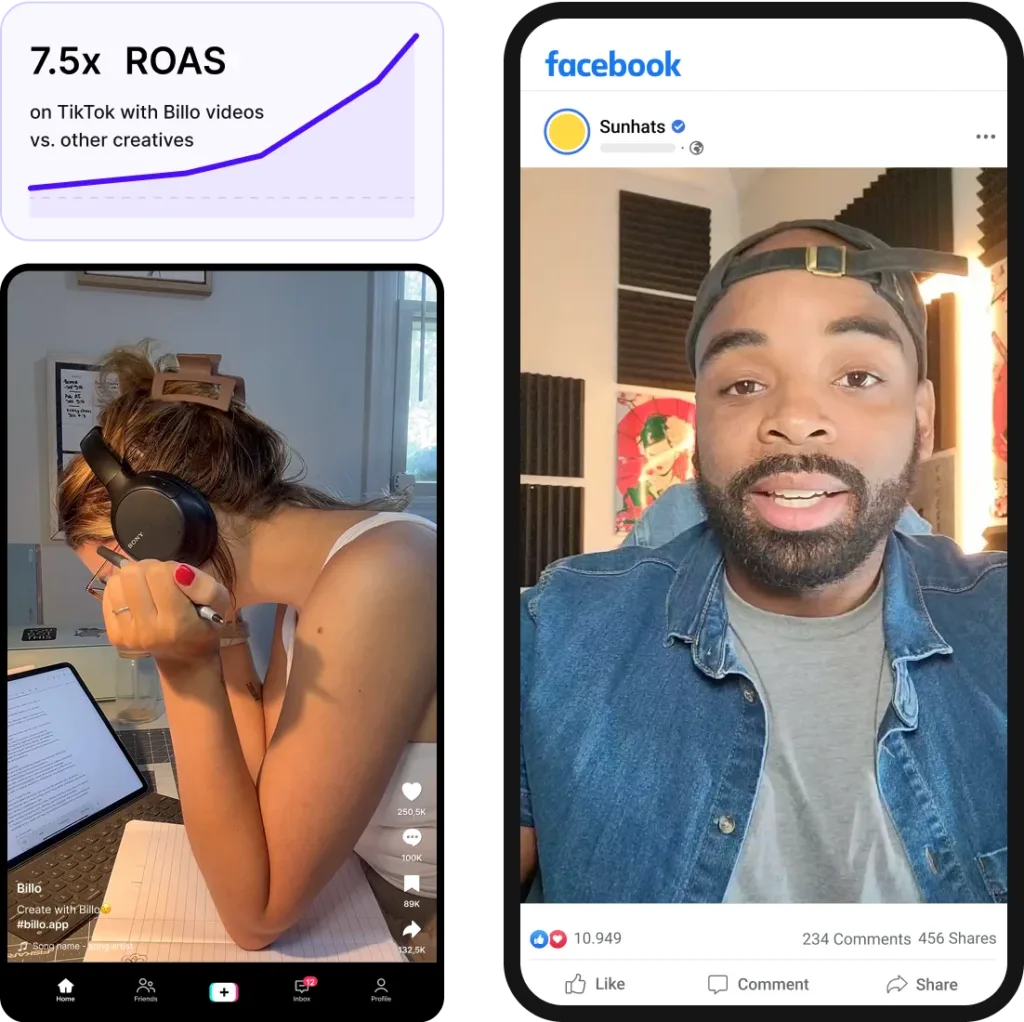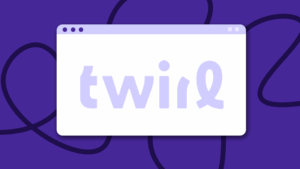The Power of Content Seeding: How to Plant Your Brand Across the Web
Passionate content and search marketer aiming to bring great products front and center. When not hunched over my keyboard, you will find me in a city running a race, cycling or simply enjoying my life with a book in hand.

Content distribution has shifted — dramatically. Today, 70% of B2B buyer research happens off-site, in places like Slack groups, Discord threads, and niche forums. That means your best prospects may never land on your blog or see your paid ads.
Instead, they’re learning from peer recommendations, Reddit discussions, and community threads. This is where content seeding comes in: it places your message where real conversations already happen. When done right, it blends in seamlessly, drives trust, and delivers results.
In this post, you’ll learn why content seeding is more relevant than ever, the strategies top brands use to make it work, and how to seed your content for long-term impact.
TL;DR
- Content seeding places your brand where real buyer conversations already happen.
- 70% of B2B research occurs off-site—forums, peer groups, and messaging apps.
- Use influencer, community, media, and owned channels to reach your audience.
- Build a strategy: define your audience, pick the right platforms, tailor your content.
- Track engagement, conversions, backlinks, and refine based on real data.
What is Content Seeding and Why It’s Important
Content seeding is a marketing strategy where brands distribute their content across digital platforms—forums, social media, blogs, and influencer channels—to place it directly in front of the right audience. Instead of waiting for people to find content via SEO or ads, seeding plants it where conversations are already happening.
There are multiple approaches to seeding:
- Community seeding shares content in active forums and niche groups.
- Influencer seeding leverages creators to spread branded messages.
- Simple and advanced seeding span everything from using your own channels to pushing high-volume content across aggregators.
Why does this matter? Because seeding doesn’t just increase visibility—it accelerates trust. Effective content seeding boosts reach, supports SEO through backlinks and social signals, and ultimately drives conversions. Plus, high-quality seeded content sustains organic visibility long after it’s published.
Types of Content Seeding
Effective content seeding isn’t one-size-fits-all. Different approaches work for different audiences, platforms, and goals. Here are the four primary types:
1. Community Seeding
This method involves embedding your content into forums, discussion threads, and niche online groups. The key is participation—adding value through genuine engagement before sharing your content. When done right, it blends in organically and earns trust in spaces like Reddit, Slack, or industry-specific Discords.

2. Influencer Seeding
Influencers lend credibility and amplify reach. By distributing your content through trusted voices—whether micro or macro-influencers—you tap into ready-made audiences with built-in trust.
This method can feel more authentic than branded campaigns, especially when Unilever launched a branded channel featuring trusted beauty bloggers to scale reach.
3. Simple Seeding
Simple seeding uses your own channels: your blog, newsletter, or social media. It’s the most cost-effective option and ensures you control the message and format. But it requires strong organic engagement to perform well, making content quality even more critical.
4. Advanced Seeding
For maximum reach, advanced seeding pushes content across high-traffic third-party platforms, aggregators, and partner channels. It often involves higher volume, strategic placement, and sometimes paid distribution to generate viral traction.
Developing a Content Seeding Strategy
There is no one way to go about each strategy development, but consider the following steps for your next endeavor.
Identify Your Target Audience
Before you decide where or how to seed your content, you need to know who you’re seeding it for. That starts with building a detailed audience persona: understand their pain points, motivations, and what kind of content they trust.
Ask:
- What are their goals and challenges?
- Where do they spend time online?
- What kind of content formats do they prefer?
Knowing your audience helps shape not just what you say, but where and how you say it. And when your seeding strategy aligns with real audience behavior, your content becomes far more likely to resonate and convert.
Choose the Right Platforms
Not all platforms deliver equal value—your content needs to meet your audience where they are, not where you hope they’ll go.
Start by aligning platform choice with your audience’s habits:
- LinkedIn for B2B professionals and decision-makers
- Instagram and TikTok for younger, visually-driven consumers
- Reddit and Discord for niche communities with high engagement
By choosing the platforms where your ICP is actually present, you raise the chances of the content being seen and performing. With unlimited budgets, you can target everything, but in most cases that approach will not be great.
Craft Shareable Content
No matter how smart your seeding strategy is, it won’t work if your content isn’t worth sharing. To break through the noise, your content must be high-quality, helpful, and platform-appropriate.
Next, tailor your format, it is best to format differently for each platform:
- Visual-first formats like Reels or carousels for Instagram
- Snappy, engaging videos for TikTok
- Longer-form posts or thought leadership for LinkedIn
When content feels native to the platform, it doesn’t feel like an ad—it feels like part of the conversation.

Outreach and Distribution Tactics
Outreach and Partnerships
Building the right relationships is essential for scalable content seeding. Whether you’re partnering with influencers or niche communities, the goal is the same: seed your content through trusted messengers who already have audience attention.
Start with influencer identification. Tools like GRIN or Billo can help pinpoint influencers who align with your values and audience needs. From there, the outreach should be personalized—showing how the collaboration offers mutual value, not just exposure.
Don’t overlook micro-influencers. While their followings are smaller, they often boast higher engagement and stronger niche authority.
Optimize Timing and Frequency
Seeding content is as much about when you post as where. Perfectly timed content meets your audience at their moment of peak attention—boosting visibility and engagement.
Start by identifying optimal posting times. Tools like Hootsuite and Buffer can help uncover when your audience is most active.
Just as important is maintaining consistency. A sporadic presence can erode credibility even if your content quality is high.
Monitor and Optimize Your Seeding Strategy
Great seeding strategies are never set-and-forget. To drive long-term performance, you need to track what’s working—and refine what’s not.
Start by measuring core metrics like:
- Engagement rates (likes, shares, comments)
- Click-through rates (CTR) and conversion rates
- Referral traffic and bounce rates
- Backlinks and keyword rankings (for SEO impact)
Tools like Google Analytics, social media insights, and SEMrush make it easy to capture these data points.
Then, use those insights to optimize. Reinvest in high-performing platforms. Adjust formats based on engagement trends. Double down on content types that convert.
Measuring Content Seeding Success
Knowing what to measure makes or breaks your content seeding strategy. Without clear KPIs, it’s impossible to know whether your efforts are working—or where to improve.
Here are the most critical metrics to monitor:
- Website traffic: Track total visits, unique visitors, and page views. Tools like Google Analytics help identify how seeded content drives new eyeballs to your site.
- Engagement metrics: Watch for time on page, bounce rate, and scroll depth. High engagement signals that your content is resonating—not just being seen.
- Conversion rates: Measure how many users take meaningful actions—sign-ups, purchases, form fills—after consuming your seeded content.
- Social shares and interactions: Gauge how often your content is being shared or discussed. Virality isn’t the goal, but shareability is a great proxy for relevance.
- Backlinks: Count the number and quality of sites linking to your seeded content. It’s not just about SEO—it’s a signal of content authority and trust.
Use Tools to Track and Optimize
The right tools make tracking and refining your content seeding strategy more efficient and precise. Here’s what to have in your toolkit:
- Google Analytics: Your go-to for monitoring website traffic, user behavior, and conversion paths. It helps you connect seeded content with downstream actions like sign-ups or purchases.
- Social media analytics: Use platform-native tools like Facebook Insights, LinkedIn Analytics, or Twitter Analytics to track likes, shares, comments, and reach. These metrics reflect how well your content is performing in social environments.
- SEO tools: Platforms like SEMrush or Ahrefs allow you to monitor backlinks, keyword rankings, and domain authority. This helps you assess your content’s long-term impact on search visibility.
Together, these tools provide a full-funnel view—from first touch to final conversion.
Case Studies and Real-World Examples
Theory is helpful. But seeing how brands have executed successful content seeding strategies brings it all to life. Here are four standouts:
- Fractl + Movoto: Marvel Mapping Infographic
Fractl created a unique infographic linking Marvel superheroes to real-world locations. It was picked up by Yahoo, Mashable, and other media giants. This earned Movoto massive visibility—and proved how creatively seeded content can explode when placed on the right platforms. - Unilever: “All Things Hair” YouTube Channel
Unilever launched a branded channel featuring trusted beauty bloggers. It didn’t just showcase products—it educated and entertained, earning over 64 million global views. Influencer seeding here created a high-trust, high-reach distribution engine. - MVMT Watches: Community-Led Growth
MVMT grew from a startup to $90M in revenue through strategic social seeding. By using brand storytelling and user-generated content, they built a loyal following of 5M+ and converted UGC into lasting brand equity. - Etsy: Community-Driven Seeding
Etsy leaned into forums, journals, and community spaces to build brand identity. Their authentic approach helped foster a grassroots movement—one that grew their user base to over 93.9 million and reinforced their “by creators, for creators” ethos.
Summary: Content That Doesn’t Wait to Be Found
Content seeding bridges the gap between creation and discovery. It’s not enough to publish a great blog or video—you need to make sure the right people see it, in the right places, at the right time.
A strong seeding strategy is proactive. It embeds your message into forums, communities, and creator content where your audience already spends time. It multiplies trust, boosts visibility, and increases ROI—especially as traditional search gets noisier and less reliable.
Find creators for your content seeding campaigns
FAQs
How does content seeding differ from traditional marketing?
Traditional marketing relies on broad distribution like SEO or paid ads. Content seeding takes a proactive approach—placing branded content directly within community spaces, newsletters, and influencer channels where audiences are already engaged.
What are the benefits of content seeding?
Content seeding delivers higher engagement, stronger trust through peer amplification, and better organic reach than traditional ads. It also enhances SEO through backlinks and brand mentions.
How do I start a content seeding campaign?
Begin by identifying your audience and where they spend time. Choose content formats that align with those platforms. Partner with influencers or community leaders, then track your content’s performance to optimize results.
SEO Lead
Passionate content and search marketer aiming to bring great products front and center. When not hunched over my keyboard, you will find me in a city running a race, cycling or simply enjoying my life with a book in hand.

Authentic creator videos, powered by real performance data
22,000+ brands use Billo to turn UGC into high-ROAS video ads.
When to Trust Data-Driven Suggestions (and Whe...
Platforms, dashboards, and AI tools now shape nearly every marketing [...]...
Read full article10 Common Digital Marketing Mistakes to Avoid in...
Digital marketing is fast, and what worked years ago might [...]...
Read full articleBest Twirl Alternatives: Which to Choose for You...
Twirl is one of many platforms helping brands connect with [...]...
Read full article



